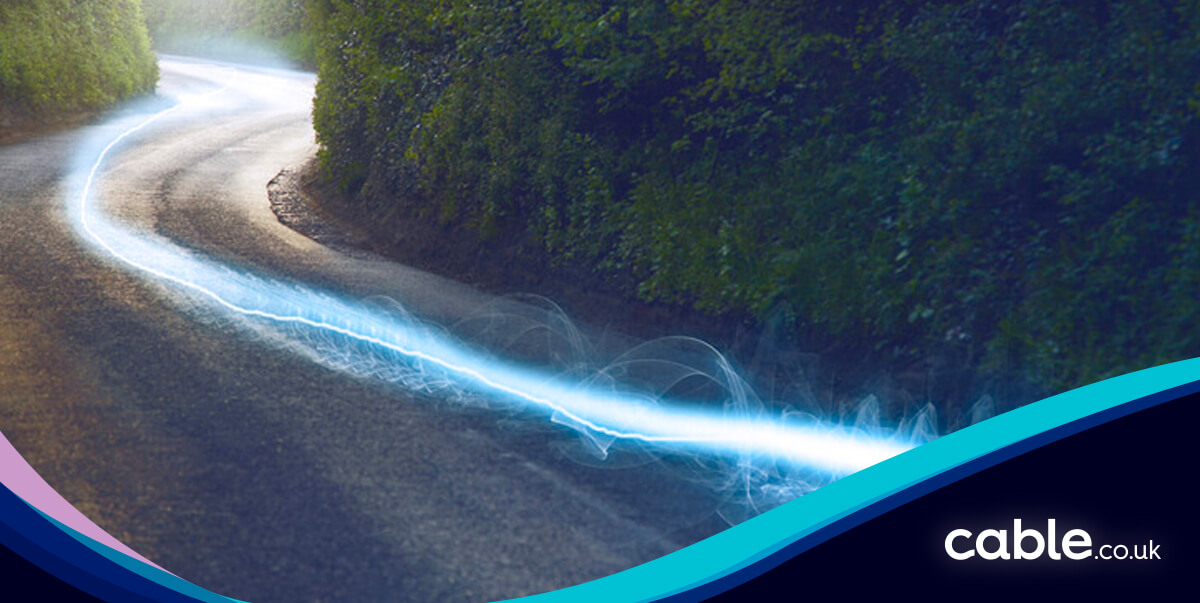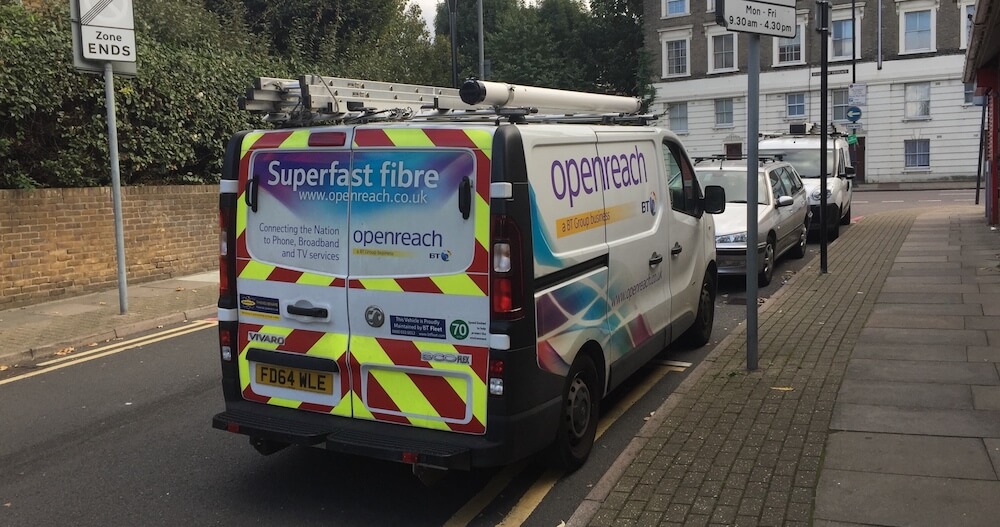Dan Howdle | May 11th, 2022
Fibre broadband checker: Can I get fibre in my area?
According to BT, fibre broadband is now available to around 95% of UK homes, which means you should have an excellent chance of getting it where you are. We tell you how to find out if it's reached your street, and when it might be coming if it hasn't.

Use our fibre broadband checker
You can instantly discover whether fibre broadband is available in your area by using our broadband postcode availability checker. Click on the button below to perform a live check to see what's available in your area.
Fibre broadband is now widely available across the UK, with around 96% of households able to access a fibre deal. With Virgin Media, who use their own network, you can expect speeds of up to a staggering 1000Mbps. With most other providers, who share the Openreach network, average download speeds of up to 70Mbps are available, with select areas now able to access up to 900Mbps. This is great news, as most of us can now enjoy internet connections that exceed our requirements.
Unfortunately, some rural or remote areas, and a smaller amount of built-up area, still can’t get a good fibre connection, though the situation is improving all the time.
What can we check?
Cable.co.uk can check instantly all types of fixed line fibre broadband including:
- Cable broadband (Virgin Media)
- Fibre to the cabinet (FTTC)
- Superfast fibre
- Ultrafast fibre
- Fibre to the home (FTTH)
- Full fibre (FTTP)
- Gigabit fibre (FTTP)
Why can’t I get fibre broadband?
Around 40% of UK households currently don’t have access to fibre broadband, for a number of reasons.
For network operators, it makes no sense to invest in the infrastructure needed to supply fibre broadband in a rural area with a small population, so if your property is in a remote location, you’re unlikely to be able to get fibre broadband for the foreseeable future.
There are also situations where fibre is not available in densely populated areas that you would expect to have excellent connectivity, for instance in parts of London. This is usually because it can be difficult to carry out work in a very busy location, or due to the limitations of state aid rules that prevent money from being spent in certain areas.
If you live in a large block of flats, you might also find your choice of broadband is more limited. Some new builds now have broadband installed while they’re being constructed, but this may limit you to one provider or type.
Projects such as Broadband Delivery UK (BDUK) have been working to fix gaps in fibre broadband provision throughout the UK, but there is still some way to go in ensuring the whole country has access to fibre.
If fast broadband at home is essential for your family, spend some time researching availability when looking for a new property. It’s worth noting that, occasionally, a postcode check will tell you that fibre is available in an area when this isn’t really the case. Typically, this discrepancy is due to a home being a long way from the nearest exchange (cabinet). To be extra safe, check with an individual provider as well as using a postcode checker.
Getting fibre installed
If you already have a landline phone connection, it’s likely that you’ll be able to self-install your new fibre service. This should be the case for most customers, as most homes already have an existing phone line.
If not, an engineer will need to visit your property to install a new landline connection. If you’re a renter, you’ll need to okay this with your landlord or letting agency. Your new provider will be able to tell you what the process involves, if your landlord wants to know.
Some fibre broadband deals come with free installation, and some require you to pay a fee to cover the equipment needed (router, sockets, cables, etc.). You may also be charged an activation fee to get you up and running. Check the small print of your deal to find out what’s included, and what isn’t, before signing on the dotted line.
For more information, see our guide to getting broadband installed.
Fibre is the fastest broadband available
Fibre offers many advantages over standard broadband. Firstly, it’s more reliable, as fibre optic cables carry information more efficiently than the pre-existing copper wiring that standard broadband is reliant upon.
Secondly, it’s much faster than standard internet, and with this increased speed comes a smoother online experience. When streaming content from sites like Netflix, Amazon and iPlayer, for example, you won’t find as many issues with freezing or buffering than with ADSL broadband.
While standard broadband has a typical average download speed of 10Mbps, fibre is significantly faster. Entry-level packages from providers sharing the Openreach network (big players like BT, Sky, TalkTalk, Plusnet and many more) usually offer speeds of around 36Mbps, while mid-range and faster deals provide average download speeds of up to 67Mbps.
Even faster speeds are available from Virgin Media, which owns its own cable network – currently available to around 60% of homes across the UK. Virgin’s average download speeds are ultrafast, ranging from 54Mbps all the way up to a lightning 1000Mbps.
Upload speeds (where information is transferred from your device to be stored online, rather than the other way around) are typically faster with fibre broadband too. These can reach up to 52Mbps with ultrafast fibre deals, though upload speeds typically range from 10Mpbs to 20Mbps with most packages.
When will fibre be available in my area?
Those households that can’t yet access fibre broadband are the most difficult for providers to service, so if there’s no provision in your area, it may be some time until this becomes available.
There are two main fibre optic networks in the UK – the Openreach network, used by most big-name providers, and Virgin Media’s own cable network.

The Openreach website has a page dedicated to its fibre broadband roll-out plans. If you’d like to find out when fibre will arrive in your area, simply type in your postcode and you’ll be shown detailed information on whether it’s currently available, planned or under review.
Find out when Openreach is coming to your area.
Virgin Media is a little more cagey when it comes to revealing plans to service new areas. This is because it doesn’t sell its services to other providers, so it’s not in Virgin’s interests to share information about its plans with the competition.
If you’d like to find out more about when and if Virgin Media’s fibre broadband will be available in your area, your best bet is to give Virgin a call and ask. You can also visit the website and register your interest.
Which internet service provider has the best network?
For the fastest fibre broadband on the UK market, Virgin Media wins hands down. Virgin’s speeds outstrip those offered by providers on the Openreach network (the likes of BT, Sky and TalkTalk), even with 900Mbps speeds now on offer in some areas.
The speeds offered by the Openreach providers are still respectable, however, and the network currently enables access to fibre broadband for 96% of UK properties, making it much more accessible than Virgin Media, at 60%.
If simple availability is key, choose an Openreach provider. If speed is of the essence, and it’s on offer in your area, then go with Virgin Media.
Our experts are available from 10am-6:30pm Monday to Saturday